“It’s going to make you feel so good!”
Katja Pantzar hears her friend call out encouragingly as she stands on a wooden dock in central Helsinki on a cold, dark and snowy winter evening. It’s 14 F (-10 C), but all Pantzar is wearing is a swimsuit, a wool hat and borrowed neoprene gloves and booties. She’s been told she’s about to take a step toward curing all her problems, from aches and pains to feeling down.
Pantzar is about to take the plunge – a dip into water that is warmer than the air but still just 38 F (about 3 C) and ice-covered. While this might seem like a daredevil stunt or a crazy bet to North Americans and many others around the world, ice swimming, or winter swimming, is not an out-of-the-ordinary sight even here in the capital city’s center.
Instead, jumping into a hole cut in the ice of the sea or a lake during winter is an everyday activity in Finland – one that’s performed with gusto.
A Helsinki-based author and journalist, Pantzer believes this unlikely national pastime is one of the reasons why Finland ranks as the happiest country in the world.
In her book “The Finnish Way: Finding Courage, Wellness, and Happiness through the Power of Sisu,” Pantzar credits swimming in the sea almost every day in Finland, all year round, to her overall happiness and well-being.
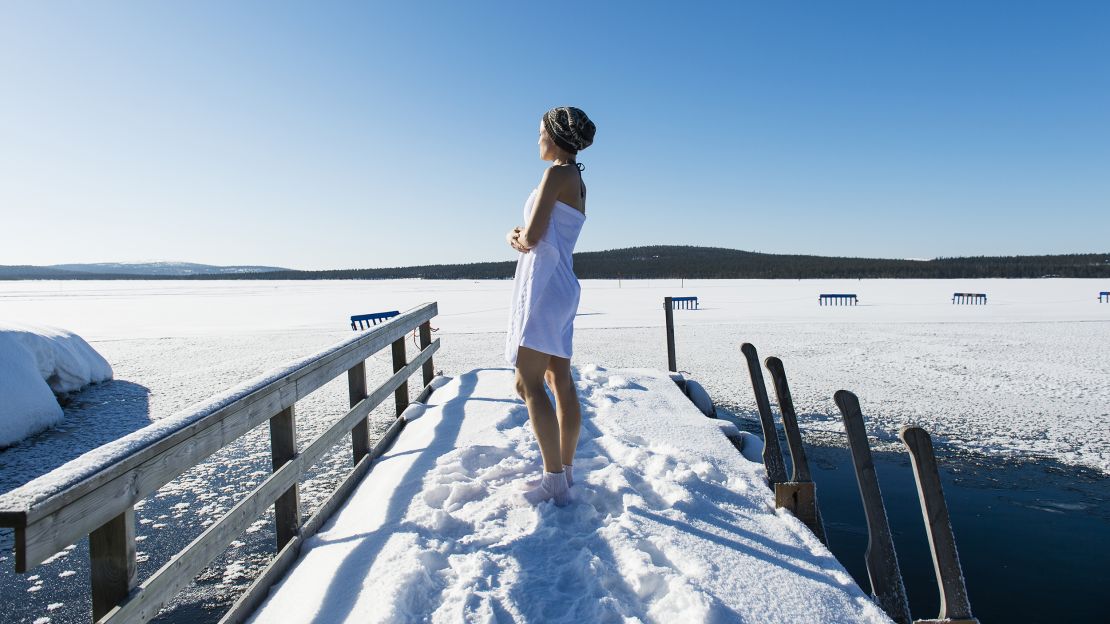
Although born in Finland to Finnish-Canadian parents, Pantzar was raised and educated in Canada. While “cold” wasn’t exactly a foreign concept, she never considered herself a cold-water person before living in Finland as an adult.
“When I moved to Finland, I noticed people seemed to get joy out of doing things that required a certain fortitude, like biking in -20 C (-4 F). I also noticed their love for ice swimming,” says Pantzar.
Taking the plunge
After meeting a group of women who were avid ice swimmers at a dinner party, Pantzar was persuaded to give it a try. It didn’t hurt, she recalls, being told ice swimming would cure all her ailments, from depression and fatigue to headaches.
On that first evening, she plunged into the near-frozen Baltic Sea. Pantzat got in up to her neck, but it was painful – like being pricked by pins, she recalls. She thought that her first experience ice swimming would be her last.
“Then this weird thing starts to happen: You tingle all over, you feel warm, and you start to feel good.”
After warming up in the sauna, Pantzar decided she wanted to jump in the icy water again, despite how excruciatingly cold, difficult and unpleasant the first experience had been. It was these first exhilarating moments of feeling so alive after her cold plunge that not only made her understand why Finns do this, but ultimately what made her become an ice swimming fanatic herself.
“To my surprise, I became completely hooked on it,” says Pantzar, “From there, needless to say, it developed into an addiction. And now I can swim for a little loop for 30 seconds or a minute.” Thirty seconds to a minute is an average plunge time, while some hard-core swimmers stay in the water for over a minute.
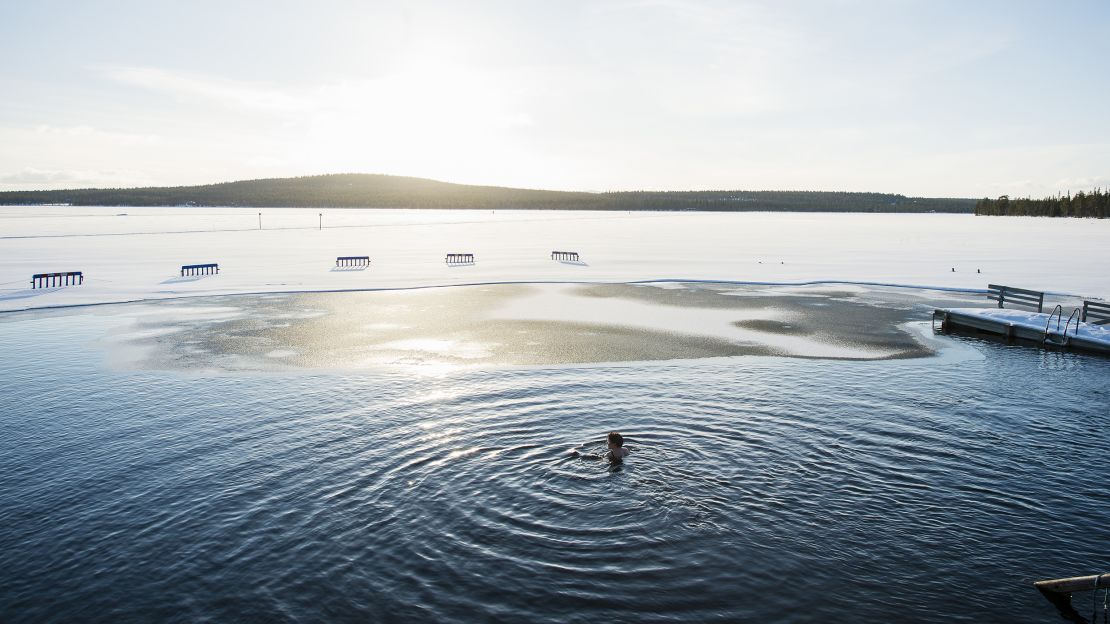
Smitten with the cold-water practice, she began to chase those first-time euphoric aftereffects that washed over her post-plunge — a moment she describes as feeling simply “invincible.” But her journalistic curiosity called her to dive deeper into finding out why she and her Finnish friends felt so energized and exuberant after a plunge into freezing water.
A wash of ‘happy’ and ‘love’ hormones
Why do Finns feel so energized and exuberant after a plunge into ice-cold water?
Pantzar sought out experts to find out, including Professor Hannu Rintamäki (recently retired) from the Finnish Institute of Occupational Health and the University of Oulu. Rintamäki had devoted his 40-year career to studying the effects of Arctic weather on the human body from an occupational and well-being perspective.
The “feel good” effects Pantzar experienced after her immersion in the icy water were a result of the body releasing the so-called “happy” hormones, endorphins, the body’s natural pain killers.
She learned that swimming made the body produce more of the mood-balancing hormone serotonin along with dopamine, the neurotransmitter that helps control the brain’s reward and pleasure centers, and oxytocin, also known as the “love hormone.”
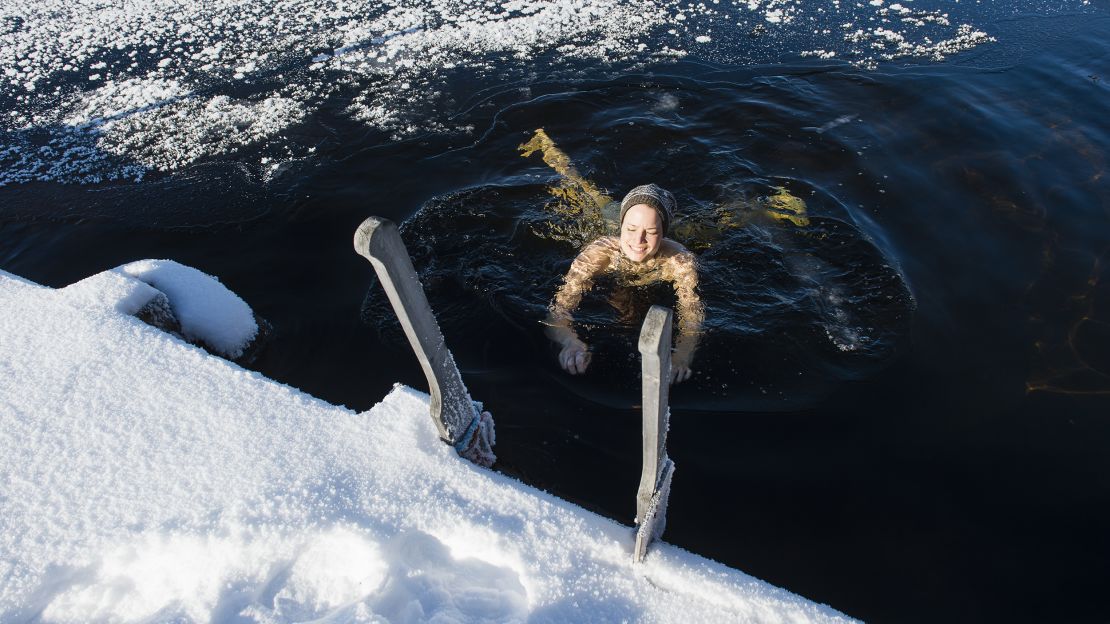
Pantzar found scientific evidence that it wasn’t just the thrill of bragging rights making ice swimmers feel so euphoric.
Still, she found that the benefits of these icy plunges don’t stop with the increased release of the feel-good hormones though. Pantzar explained a bevy of spinoff effects for cold water swimming, including enhanced blood circulation, a boosted immune system and an increase in calories burned.
Another bonus: Many ice swimming devotees follow up their dip with a sweat in the sauna, which not only helps to relax the mind and body but also to release toxins. Increased circulation and improved cardiovascular health are two other sauna benefits, and the Finns really like their sauna time.
Swimming through Finland’s cold, dark winters
There are about 150,000 active winter swimmers in Finland, and there’s even a cadre of ice swimming enthusiasts that take a dip twice a day.
Hannu Markkanen began cold-water swimming as a kid growing up in Finland, but it wasn’t until his adult years when he joined a cold-water swimming club in Helsinki that the activity became part of his daily routine. Currently, Markkanen takes a swim in the sea twice a day, on his way to work and then in the evening, where he follows the dip with a visit to the sauna.
“For me, ice swimming makes the winters much more enjoyable. Especially, here in the southern Finland where the winters have become dark and slushy because of the climate change,” says Markkanen, who shared that he no longer suffers from seasonal depression since his full embrace of ice swimming.
He likens the energy derived from the summer sun to the cold water immersion, which he says has helped him handle work-related stress more effectively.
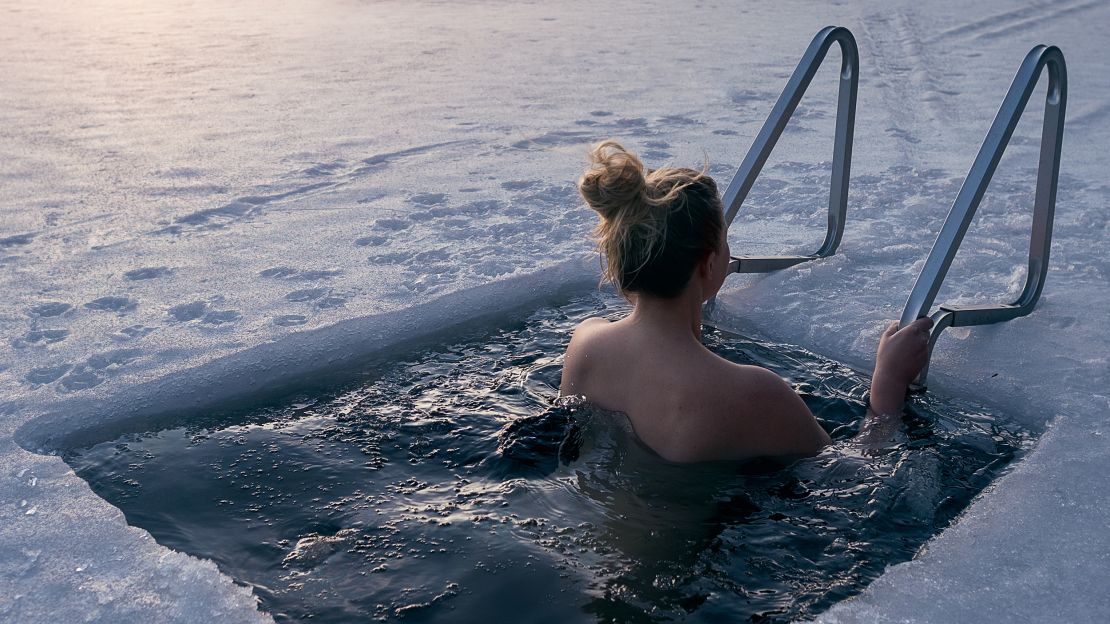
Depending on your personality or mood, Markkanen suggests ice swimming can be a quiet, meditative exercise or a social experience where people from different backgrounds, professions and culture come together.
Building a community is made even easier by the simple fact that in the water and in the sauna, you can’t be on your phone. Markkanen believes that as younger people seek authentic, digital-free experiences, they are in turn embracing the age-old Finnish tradition.
For winter swimming instructor Päivi Pälvimäki, taking to Finland’s natural ice-cold waters is both more enjoyable and healing than an indoor swim. Like Markkanen, Pälvimäki says it helps make the winter more bearable. After an icy swim, Pälvimäki feels invigorated and happy. She has more energy and sleeps better, too.
This explains why the former university art lecturer made swimming her full-time career.
Co-founder of Finland’s first open-water swimming association in 2015, Pälvimäki calls the activity a simple mindfulness practice. “Your survival mechanisms spring into action in cold water as you need to be present to counteract them with tranquility,” she says adding, “And it helps to balance a stressful life by bringing you into close contact with nature.”
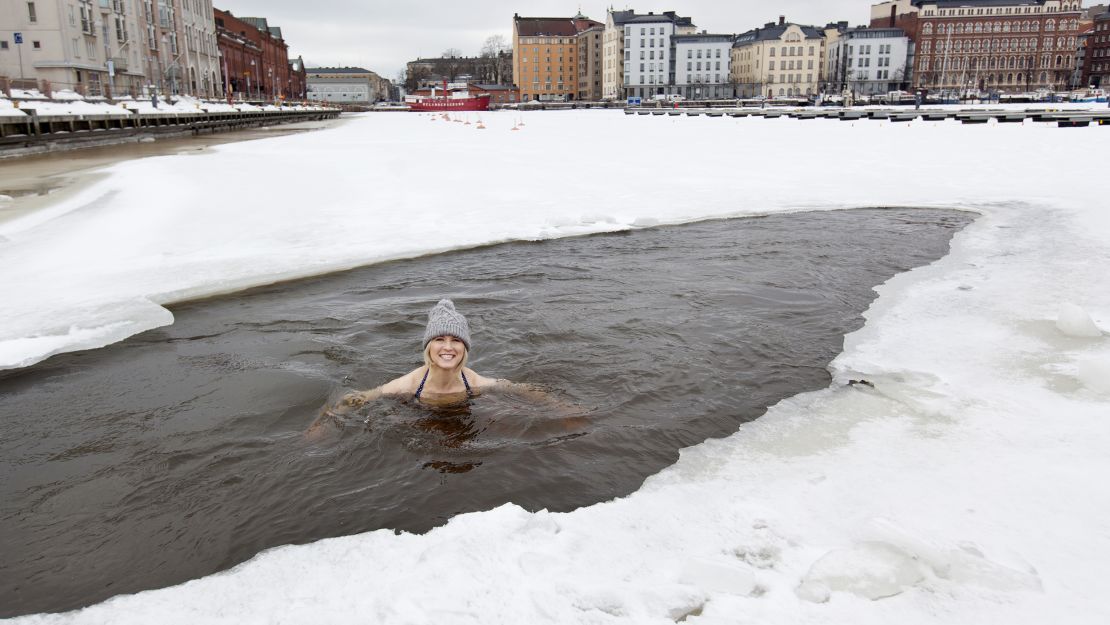
Sisu and the art of not taking the easy way out
As Pantzar dove more into the practice of ice swimming, the concept of “sisu” continually surfaced. “Sisu is Finland’s 500-year-old national concept that roughly translates to grit, fortitude, or perseverance, or if you prefer, being a bad-ass,” explains Pantzar.
Pantzar started seeing more and more examples of this fortitude Finns embodied. Pleasure derived from doing seemingly uncomfortable things like jumping into frozen lakes and seas could be linked to this idea of sisu.
The most historic example of Finnish “sisu” is the country’s repulsion of the Soviet Union military during the Winter War in 1939. Even though the Soviets had three times more soldiers and 30 times more aircraft and 100 times more tanks when they invaded Finland, the Finnish army managed to outsmart and deter the Soviet army in brutal winter temperatures and darkness.
Another iconic example of “sisu” Pantzar shared with me is the story of Finnish Olympic runner Lasse Viren’s unbelievable comeback after falling during the 10,000-meter race at 1972 Munch Olympic games. Not only did he continue to run, but he won the gold medal and set a new world record.
Practicing daily acts of sisu
It’s not only Finnish soldiers and Olympians that embody this national grit. It can be seen in everyday life in Finland in daily acts of sisu. Having grown up in “North America’s culture of convenience,” Pantzar says, as an outsider looking in, she noticed in Finnish people a mindset to turn challenges into opportunities.
“Not taking the easy way out” is an everyday attitude in Finland, according to Pantzar. Like many Finns, she cycles year-round in winter, enjoys foraging for berries instead of simply buying them in the grocery store and encourages her child to play outside no matter the freezing temperatures.

It takes a little bit of sisu on a snowy morning to go for a jog – or even a cold plunge in the sea – rather than the easy way out by sliding into a cab, believes Pantzar. But you’ll feel better because of accepting and conquering the challenge.
Visitors to Finland during winter can try ice swimming.
Pantzar recommends Helsinki’s Allas Sea Pool, a floating outdoor swimming pool complex in the city’s central harbor. Open to the public, it has lifeguards on-hand along with heated pools and saunas to warm up after a cold plunge.
Finland: A country of contentment
“If you were to come here in the middle of winter and jump on the tram, you might wonder where this ‘Happiest Country in the World’ comes from, as Nordic people aren’t the most smiley, or small talk-y of people,” shares Pantzar.
The secret to Finnish happiness is summed up in the Finnish saying that, translated, means: “Happiness does not come from searching for it, but by living.”
By keeping themselves so busy — whether it’s ice swimming, cycling or reading (Finland is one of the most literate countries in the world) – Finns simply don’t have time to search for happiness.
Instead, Finns are content in these daily exercises of thought, movement and grit, some more daring, extreme and blissfully cold than others.
Kathleen Rellihan is a travel writer and editor based in Brooklyn, New York. Follow her on Twitter @k_rellihan.









